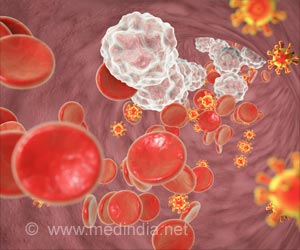Highlights:
- Pre-exposure prophylaxis and post-exposure prophylaxis in high risk groups to prevent HIV infection may be more cost effective than antiretroviral therapy (ART) of active HIV cases
- Although HIV is now considered a manageable condition since the advent of ART, new cases are also increasing due to continued high risk behavior among people
- Currently, there are no effective vaccines or control measures to prevent HIV infection in high risk groups.
Development of Guidelines for Prophylaxis – Key to Prevent HIV in High Risk Groups
- Nearly half (54%) of all newly diagnosed infections in Canada occur in gay, bisexual and men who have sex with men (MSM), a high risk group in whom the estimated risk of infection is 131 times higher than other men.
- Intravenous drug users have been estimated to have 59 times more risk to get HIV than nonusers.
- Persons from countries where HIV is endemic, namely some African countries are 6.4 times more likely to become infected
- Indigenous Canadians are also at higher risk (2.7 times more), compared to the general Canadian population.
- The guidelines for pre-exposure and post-exposure prophylaxis were developed by the Biomedical HIV Prevention Working Group of the CIHR Canadian HIV Trials Network with a panel of 24 experts from diverse disciplines.
- These guidelines generally conform to international guidelines followed in the USA, UK and Australia.
- The guidelines are aimed at health care personnel from different disciplines like primary care, infectious diseases, emergency medicine, nursing, pharmacy and others.
- The strategies are explained with easy reference boxes giving practical advice on prevention of HIV infection.
- The guidelines may also be useful to policy makers who draft important decisions on health and public welfare.
Pre-exposure and Post-exposure Prophylaxis – Safe and Cost Effective
- Pre-exposure prophylaxis or PrEP refers to a method to prevent HIV infection in persons who do not have HIV but who are at significant risk of getting it, by taking antiretroviral pill every day even before possible exposure occurs.
- Non-occupational postexposure prophylaxis (nPEP) refers to taking a course of antiretroviral medications to prevent infection, after being potentially exposed to HIV, following sexual or drug associated exposure.
"To date, medication costs have also restricted the feasibility and acceptability of these strategies," write the authors. "However, the recent introduction of generic TDF/FTC [the anti-HIV medication approved for use as PrEP in Canada and a major component of all nPEP regimens] and the increasing availability of public drug coverage for PrEP in Canada may have substantial effects on their uptake."
Currently Practised Preexposure Prophylaxis Norms in the US
- The pill (brand name Truvada) administered as prophylaxis is a combination of two medicines (tenofovir and emtricitabine) that is used with other medicines to treat HIV.
- When taken regularly PrEP has been shown to reduce the risk of infection by as much as 92%
- Additionally, when used in combination with other measures such as use of condoms, education about reducing risky practices, and voluntary circumcision, PrEP can prove to be a very powerful tool in HIV prevention.
- It is very important though that the person commits to taking the drug every day and follows up with the health care worker every three months.
Persons who may be Considered for Preexposure Prophylaxis
- If you sometimes have sex without using a condom, especially if the partner has known HIV infection.
- If you do not know whether your partner has HIV infection but you know that your partner belongs to a high risk group (for example, your partner is an intravenous drug user or has sex with other people too).
- If you have recently been diagnosed with a sexually transmitted infection.
- If your partner has HIV infection, PrEP may help in protecting you from becoming infected especially if you are trying to become or are already pregnant or breastfeeding.
Post-exposure Prophylaxis
PEP must be started within 72 hours after a possible recent exposure to HIV (for example sexually assaulted, broken condoms, shared needles), but the sooner you start PEP, the better. Every hour counts.Post-exposure prophylaxis must be taken once or twice daily for 28 days and is effective in preventing HIV although not 100%.
References:
- Pre- and post-sexual exposure prophylaxis of HIV: An update - (https://www.hiv.gov/hiv-basics/hiv-prevention/using-hiv-medication-to-reduce-risk/post-exposure-prophylaxis)
- Pre-Exposure Prophylaxis (PrEP) - (https://www.cdc.gov/hiv/risk/prep/index.html)
- PEP - (https://www.ncbi.nlm.nih.gov/pmc/articles/PMC5389206/)
Source-Medindia
















